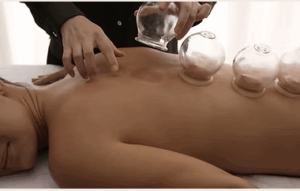Erectile dysfunction (ED) is a common condition that affects millions of men worldwide. It involves the consistent inability to achieve or maintain an erection sufficient for sexual performance. While it can be a distressing issue, the good news is that there are various treatment options available that can help restore sexual Erectile Dysfunction Treatment and improve quality of life.
What Is Erectile Dysfunction?
Erectile dysfunction is more than just an occasional failure to perform. It’s a persistent issue that can stem from a variety of physical and psychological causes. While it’s more common in older men, it’s not an inevitable part of aging. Many men experience ED due to stress, lifestyle factors, or underlying health conditions.
Some common causes include:
- Cardiovascular diseases
Diabetes
High blood pressure
Hormonal imbalances (e.g., low testosterone)
Obesity
Smoking and alcohol use
Psychological issues such as depression or anxiety
Understanding the root cause of ED is key to finding the most effective treatment.
Lifestyle Modifications: The First Line of Defense
Before jumping into medical treatments, doctors often recommend lifestyle changes. For many men, improving overall health can significantly improve erectile function.
Here are a few recommended changes:
- Exercise regularly: Physical activity improves blood flow, reduces stress, and supports heart health—all of which are crucial for erectile function.
Eat a balanced diet: A diet rich in fruits, vegetables, whole grains, and lean proteins supports cardiovascular health and hormone levels.
Quit smoking: Smoking damages blood vessels and restricts blood flow, directly affecting the ability to achieve an erection.
Limit alcohol: Excessive alcohol consumption can reduce libido and impair erectile response.
Manage stress: Chronic stress contributes to ED by increasing cortisol levels and interfering with sexual arousal.
In many cases, these simple lifestyle adjustments can lead to noticeable improvements.
Oral Medications: Popular and Effective
When lifestyle changes aren’t enough, medications are often the next step. The most common ED treatments are oral phosphodiesterase type 5 inhibitors (PDE5 inhibitors). These drugs enhance the effects of nitric oxide, a natural chemical that relaxes muscles in the penis and increases blood flow.
The most commonly prescribed include:
- Sildenafil (Viagra)
Tadalafil (Cialis)
Vardenafil (Levitra, Staxyn)
Avanafil (Stendra)
These medications typically begin to work within 30 to 60 minutes and can last from a few hours up to 36 hours, depending on the type. However, they only work with sexual stimulation and are not aphrodisiacs.
It’s important to note that these drugs aren’t suitable for everyone, especially men taking nitrates for heart conditions. Always consult a doctor before starting any medication.
Vacuum Erection Devices (Penis Pumps)
A non-invasive and drug-free option is the vacuum erection device (VED), also known as a penis pump. It works by creating a vacuum around the penis, drawing blood into the shaft, and helping to maintain an erection with the help of a constriction ring.
While it might not be as spontaneous as oral medication, it is safe, effective, and often covered by insurance. It can be a good alternative for men who cannot tolerate pills.
Penile Injections and Suppositories
For men who don’t respond to oral medication, injectable drugs or urethral suppositories can offer a more direct approach.
- Alprostadil injection (Caverject): This drug is injected directly into the base or side of the penis and can produce an erection in 5 to 20 minutes.
Alprostadil urethral suppository (MUSE): A small pellet inserted into the urethra that dissolves and promotes blood flow.
These methods may seem intimidating at first, but with proper instruction, they are generally safe and effective.
Hormone Therapy
If ED is due to low levels of testosterone, hormone replacement therapy (HRT) may be recommended. This could involve testosterone gels, patches, or injections.
However, testosterone therapy is not suitable for all men and doesn’t always solve ED on its own. Blood tests and medical evaluation are required to determine whether low testosterone is the actual cause.
Psychological Counseling
Since ED often has a psychological component, counseling or sex therapy can be highly effective—especially when emotional or relationship issues are involved. Anxiety, depression, or stress can significantly affect sexual performance, and therapy can help men and couples navigate these challenges.
Cognitive-behavioral therapy (CBT) and other techniques are commonly used to address performance anxiety and improve self-esteem.
Surgical Options
Surgery is typically considered a last resort, used when other treatments have failed. The most common surgical treatment for ED is the penile implant.
There are two main types:
- Inflatable implants: These allow men to control the timing and duration of their erection using a pump placed in the scrotum.
Malleable implants: These consist of bendable rods that can be manually positioned.
Though invasive, implants have high satisfaction rates and are a viable solution for men with severe ED.
Emerging Treatments and Future Outlook
Research into erectile dysfunction continues to evolve, and newer treatments are on the horizon. Some emerging therapies include:
- Shockwave therapy: Low-intensity shockwaves may stimulate blood vessel growth and improve blood flow.
Platelet-rich plasma (PRP) therapy: This involves injecting a man’s own plasma into the penis to promote healing and regeneration.
Stem cell therapy: Still experimental, this aims to reverse ED by regenerating damaged tissue.
While these treatments are promising, more studies are needed before they become mainstream.
Final Thoughts
Erectile dysfunction is a sensitive but treatable condition. With the wide range of therapies available today—from lifestyle changes and medications to devices and surgery—most men can find a solution that works for them.
The most important step is to speak with a healthcare provider. ED can be a symptom of a more serious health issue, and early intervention not only improves sexual function but may also help detect and address other medical problems.
Living with ED can be frustrating, but it’s not something you have to face alone. With the right treatment, support, and information, confidence and intimacy can be restored.






